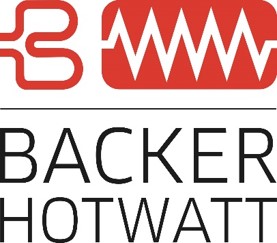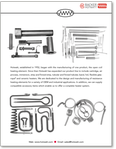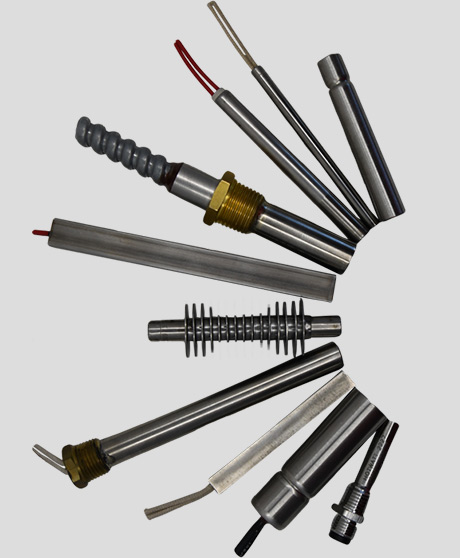
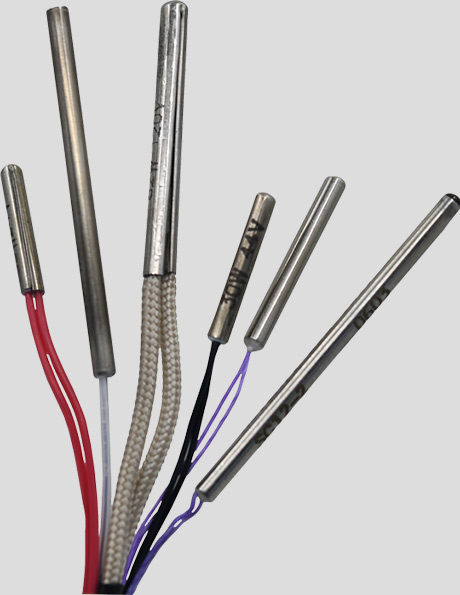
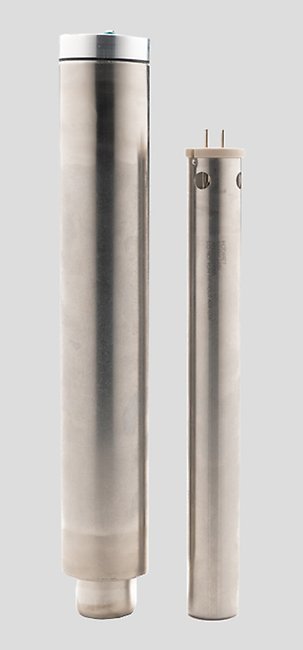
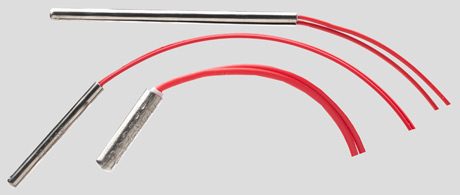
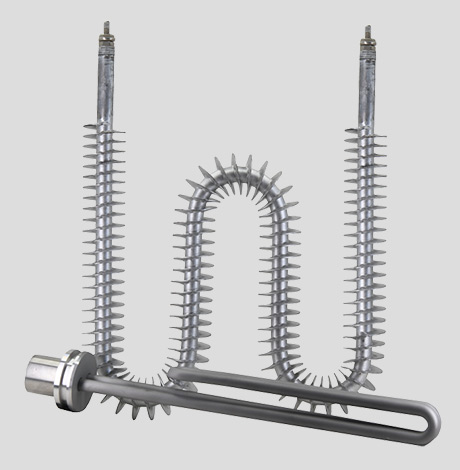
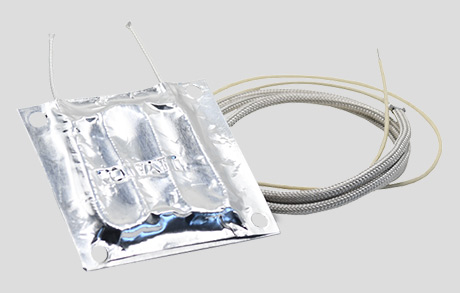
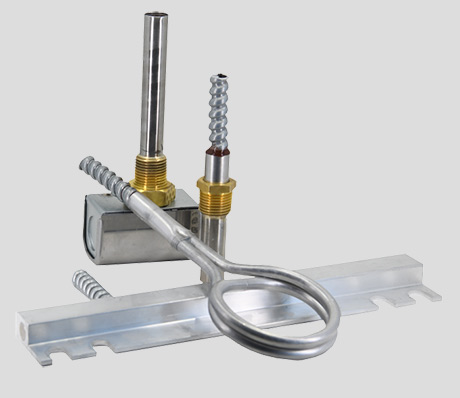
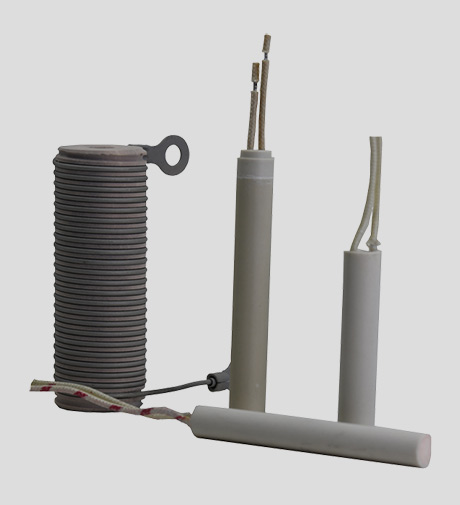
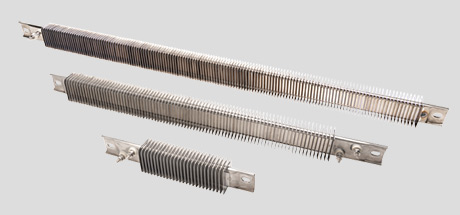
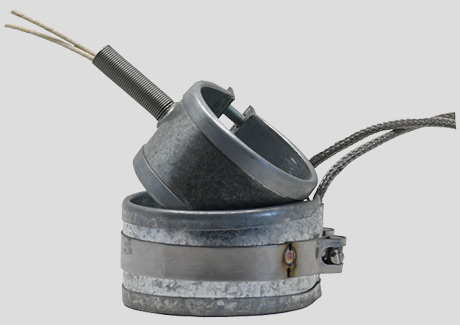
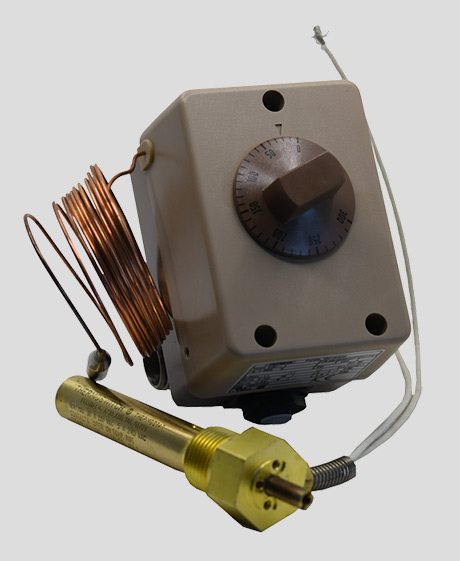
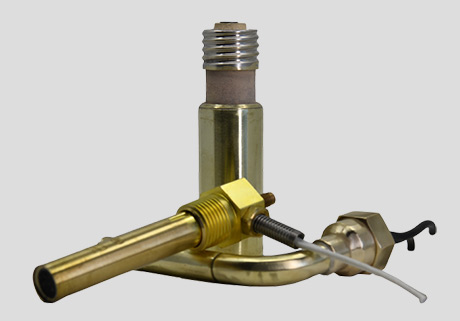
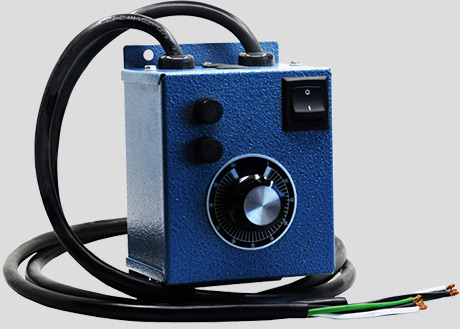
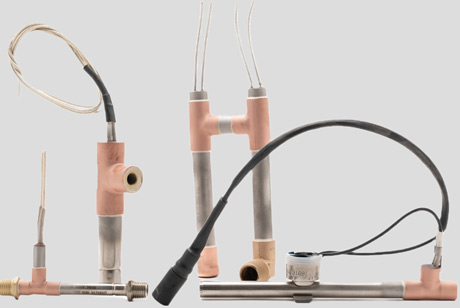
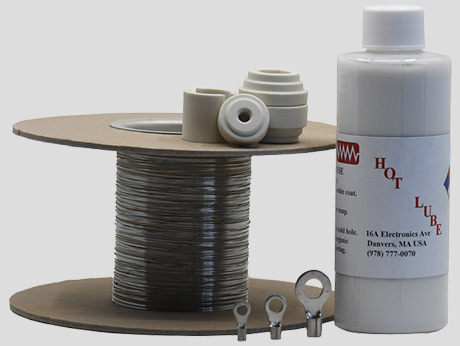
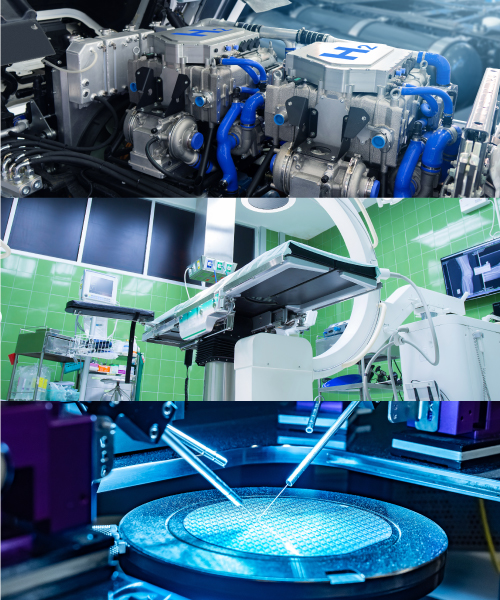

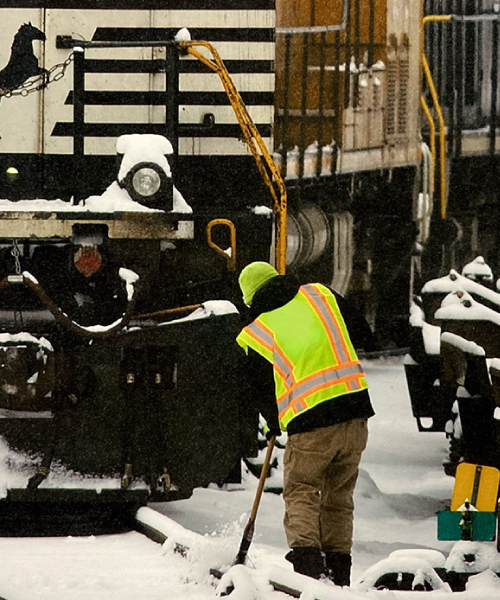
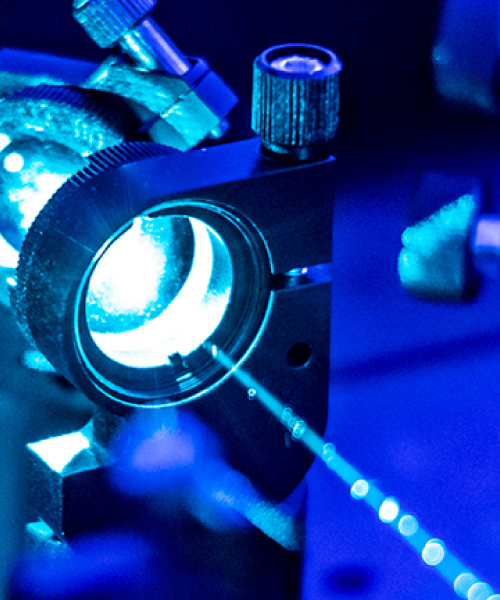
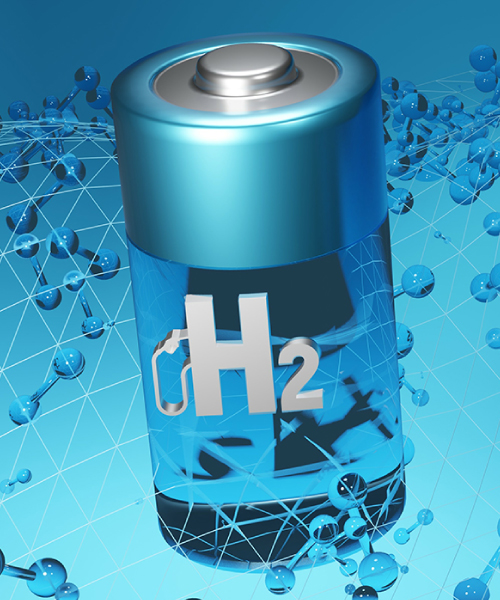
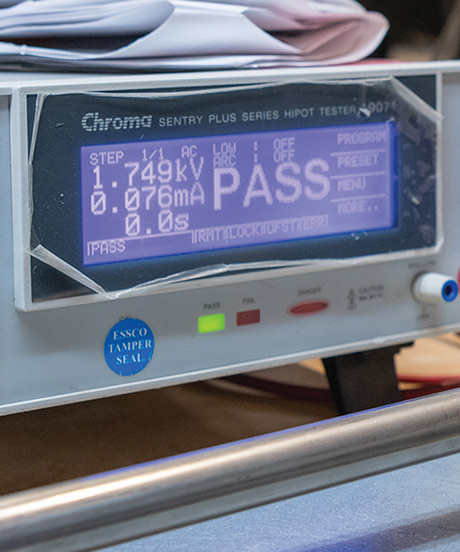
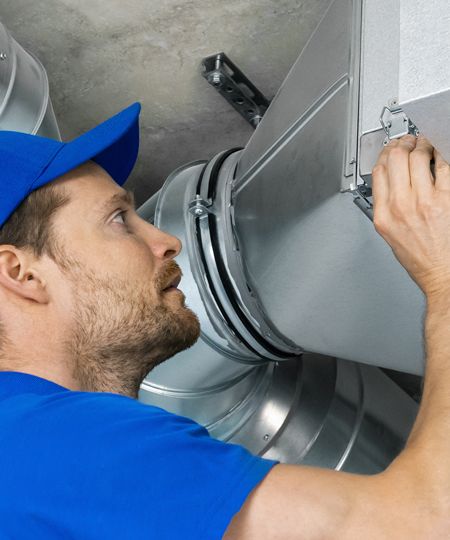
MARKETS
ELECTRIC HEATERS FOR HVAC
For OEMs designing the next generation of heating, ventilation, and air conditioning systems, electric heaters—especially flanged heaters—are proving indispensable. But what makes precise electric heating so critical in HVAC? And how do different heater types fit into the complex puzzle of modern climate control?
A Smarter, Safer Heat: Why OEMs Are Powering Up with Electric Air Duct Heaters
Increasingly, OEMs are making the move from gas to electric air duct heaters—and for good reason. Electric units, especially those featuring efficient tubular finned elements, deliver powerful performance with zero direct emissions. They align with today’s sustainability goals, integrate easily with renewable energy systems, and eliminate the safety concerns tied to gas combustion. The result? Cleaner, safer, and more future-ready HVAC solutions that today’s market demands.
This resource page explores the importance of precision heating, and how you can depend on electric heater technologies to shape the future of efficient, sustainable buildings.
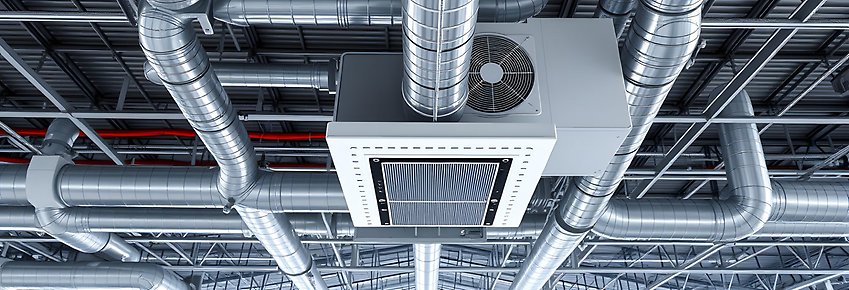
Precision Heating: The Backbone of Modern HVAC
In commercial and industrial environments, HVAC systems do far more than simply “heat the air.” They are responsible for maintaining exact temperatures, controlling humidity, and supporting specialized processes—often simultaneously. Precision heating is at the core of these functions.
Consider a large office building in a city center. The HVAC system must deliver consistent warmth to every corner, even as outside temperatures fluctuate and internal heat loads change throughout the day. If the system overshoots or undershoots the setpoint, comfort is compromised, and energy is wasted. In sensitive environments, such as data centers or pharmaceutical labs, even a small deviation in temperature or humidity can spell disaster for equipment or products.
This is where electric heaters in HVAC systems shine. (We provide a quick overview in this blog, as well.) Unlike traditional gas-fired systems, electric heaters respond instantly to control signals, ramping up or down to maintain setpoints with pinpoint accuracy. For OEMs, this means the ability to design HVAC systems that are simultaneously efficient, highly responsive, and adaptable to real-world conditions.
Flanged heaters are favored in HVAC systems because they deliver efficient, precise, and reliable heating with minimal energy loss and maintenance. Their ability to be customized for a wide range of applications, combined with robust safety features and environmental benefits, makes them the go-to solution for OEMs and facility managers seeking optimal performance and long-term value in HVAC operations. This resource page is designed to give you an inside look at why flanged heaters are so instrumental to efficient, reliable HVAC systems.
Utilizing This HVAC Resource
This discussion offers a look at some of the electric heaters we provide to the HVAC industry. We build both standard and custom heaters—though note that the images on this page are unique designs and builds for custom heaters. There is a link to each section below that will take you to the corresponding topic on this page about HVAC heating needs for EOMs. You can read this page as a whole, or click on a topic to be taken directly to that or to a product group of interest. Either way, this resource provides comprehensive details serving OEMs in the HVAC market.
When you see something that interests you, and if you are looking for a custom solution,
contact us to begin the discussion with an engineer.

WHAT ARE FLANGED HEATERS? AN IN-DEPTH LOOK
Flanged heaters are robust, industrial-grade electric heating devices designed to efficiently heat liquids, gases, or air in a wide variety of commercial and industrial HVAC applications. Their construction, versatility, and precise control capabilities make them a preferred choice for OEMs and system integrators seeking reliable, high-performance heating solutions.
Construction and Design
At their core, flanged heaters consist of multiple tubular heating elements—often shaped in “U” bends—welded or brazed onto a flat, circular flanged, typically made from steel or stainless steel. The flange itself is engineered with bolt holes that align with corresponding holes on a tank, duct, or pipe, allowing for a secure, leak-proof installation. This mounting method ensures that the heater can be easily inserted or removed for maintenance or replacement.
The tubular elements are sheathed in corrosion-resistant materials, such as stainless steel, Incoloy®, or copper, selected based on the chemical properties and temperature requirements of the medium being heated. Inside the flanged heater’s terminal enclosure, electrical connections are protected from environmental hazards, and safety features such as thermowells for over-temperature sensors are often included.
Powering the future of HVAC efficiency, tubular finned heaters are setting the standard in the shift to electric HVAC heating—thanks to advanced spiral-wound fins that dramatically boost surface area for faster, more even heat distribution. The result? Greater energy efficiency, longer heater life, and lower operational costs. Built with corrosion-resistant materials, these rugged heaters thrive in tough environments and can be tailored to fit tight spaces or meet unique HVAC specs. Their durable construction also reduces electrical risks and helps prevent airborne particle ignition—delivering safety and performance you can count on.
Flanged heaters operate on the principle of electrical resistance heating. When electrical current passes through the heating elements, they generate heat, which is then transferred directly to the surrounding liquid or gas via conduction. This direct immersion method is highly efficient, as nearly all the electrical energy is converted to usable heat within the medium.
Temperature is precisely regulated using thermostats, thermocouples, or advanced control systems. These sensors monitor the process temperature, and cycle the heater on or off as needed, ensuring consistent and safe operation. Built-in safety mechanisms, such as high-limit switches, prevent overheating and protect both the heater and the system.
Where They Work in HVAC Systems
Flanged heaters are found wherever HVAC systems require reliable, efficient, and precisely controlled heating—whether that’s keeping a hospital’s hot water supply steady, protecting a warehouse’s pipes from freezing, or supporting the demanding needs of an industrial process. Their direct immersion design, robust construction, and flexibility make them an indispensable component in modern HVAC applications.
• Hot water systems and boilers
• Duct heating and air handling units
• Freeze protection and temperature maintenance
• Process and industrial heating
• Custom and specialized applications
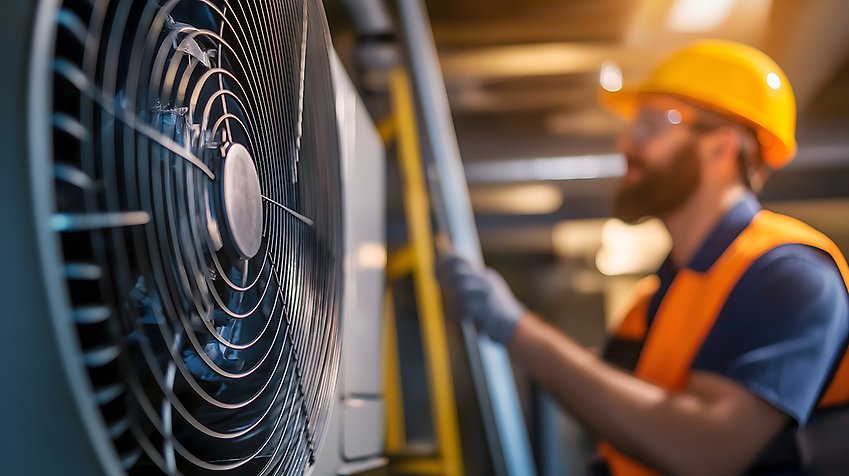
How Flanged Heaters Contribute to the Overall System Reliability In HVAC
Flanged heaters make a significant contribution to the overall reliability of HVAC systems by combining robust engineering, efficient heat transfer, and advanced safety and control features.
Here’s how they enhance system reliability:
1. Robust Construction and Durability
Flanged heaters are built from high-quality materials such as stainless steel, Incoloy, or titanium, which provide excellent resistance to corrosion, oxidation, and mechanical stress. This durability allows them to withstand harsh operating conditions, high pressures, and elevated temperatures commonly found in HVAC environments, reducing the risk of premature failure and ensuring long service life.
2. Efficient and Uniform Heat Transfer
With their direct immersion design, flanged heaters deliver heat directly to the medium (liquid, gas, or air) being heated. This results in quick, uniform heating and minimizes energy loss, which boosts efficiency while ensuring that the HVAC system can consistently maintain its setpoints without excessive cycling or stress on other components. Uniform heating reduces the likelihood of temperature fluctuations that could compromise system performance.
3. Precise Temperature Control
Flanged heaters are equipped with advanced temperature sensors, such as thermocouples or RTDs, and can be integrated with sophisticated control systems. This allows for accurate monitoring and adjustment of the heating process, ensuring the desired temperature is maintained consistently. Precise control helps prevent overheating, thermal cycling, and associated wear on system components, all of which are critical for reliable operation.
4. Easy Maintenance and Serviceability
The flanged mounting design simplifies installation, inspection, and replacement of heater elements. Maintenance can often be performed without significant system downtime, which minimizes disruptions and supports high operational availability. Easy serviceability allows quick issue resolution, minimizing repair time and boosting overall system reliability.
5. Safety Features and Compliance
Flanged heaters are typically equipped with built-in safety features, such as high-limit temperature controls, pressure switches, and thermal cutouts. These features protect both the heater and the HVAC system from damage due to overheating or electrical faults, further enhancing reliability and ensuring compliance with industry standards.
6. Customization for Application Needs
Flanged heaters can be customized in terms of size, watt density, sheath material, and control options to match the specific requirements of each HVAC application. This ensures optimal performance and compatibility, reducing the risk of operational issues caused by improper sizing or material incompatibility.
By offering robust construction, efficient and uniform heating, precise control, easy maintenance, and advanced safety features, flanged heaters help HVAC systems operate reliably over extended periods. Their ability to withstand demanding conditions and minimize downtime directly supports high functional and operational availability, making them a trusted solution for OEMs and facility managers seeking dependable HVAC performance.
Impact on Overall Operational Costs of HVAC Systems
Flanged heaters can have a substantial impact on the overall operational costs of HVAC systems, generally contributing to cost reductions in several key areas:
1. Lower Maintenance and Downtime Costs
Flanged heaters are designed for durability and easy maintenance.
2. Increased Energy Efficiency
Flanged heaters provide precise heat control and are highly responsive to system demands.
3. Extended Equipment Lifespan
Because flanged heaters reduce thermal cycling and deliver consistent heat, they help prevent unnecessary wear on other HVAC components.
4. Reduced Replacement Frequency
The longevity of flanged heaters means they require less frequent replacement compared to less robust heating solutions.
5. Scalability and Adaptability
Flanged heaters can be tailored to specific power requirements and system sizes, ensuring optimal performance without unnecessary oversizing.
By improving energy efficiency, lowering maintenance needs, and extending the lifespan of both the heater and the broader HVAC system, flanged heaters help drive down the total operational costs of HVAC systems. These savings accrue over the life of the system, making flanged heaters a cost-effective choice for both new installations and retrofits in commercial and industrial settings.
TYPES OF ELECTRIC HEATERS IN HVAC: FUNCTIONS & BENEFITS
Overall Key Features and Benefits
• Versatility:
Suitable for heating water, oils, chemicals, air, and gases in a wide range of environments.
• Customizability:
Available in various flanged sizes, wattages, voltages, and materials to match specific
application needs.
• Efficient Heat Transfer:
Direct immersion design minimizes energy loss and maximizes heating efficiency.
• Durability:
Corrosion-resistant construction and moisture-sealed elements ensure long service life, even in
harsh or corrosive environments.
Flanged Heaters:
Immersion & circulation heating; high efficiency, robust, customizable, precise
Immersion heaters are installed directly into tanks, boilers, or storage vessels to heat water or other fluids. They are commonly used in hydronic heating systems, hot water storage, and process tanks. Integrated temperature sensors ensure accurate monitoring and control, which is crucial for both energy efficiency and safety.
Backer Hotwatt immersion heaters are robust, energy-efficient heating elements designed for direct immersion in liquids such as water, oil, chemicals, and inert gases. These heaters are widely used in industrial and commercial settings for applications requiring controlled, efficient, and reliable liquid heating. Backer Hotwatt offers a comprehensive range of standard and custom immersion heaters, available in various lengths, wattages, voltages, and sheath materials to suit diverse operational needs.
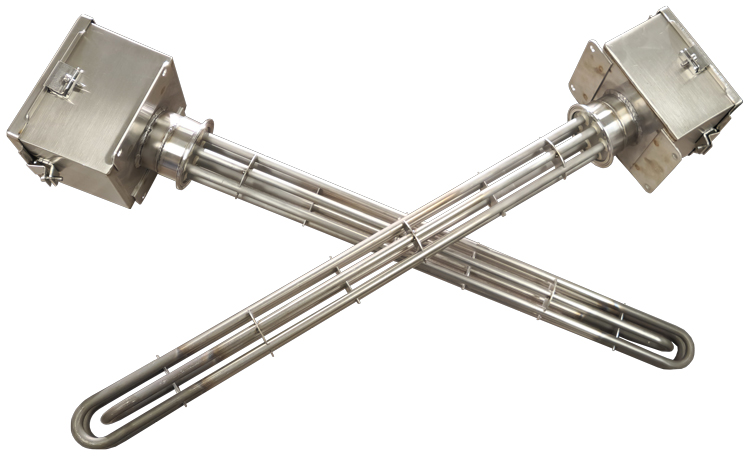
Key Features Include:
• Versatile Applications:
Suitable for heating a wide range of liquids in tanks, vats, process equipment, humidifiers, food cookers, and more.
• Efficient Heat Transfer:
Designed for optimal heat transfer to meet both low- and high-temperature requirements.
• Construction Options:
Available with brass or stainless-steel bushings, and a variety of junction boxes for environmental protection—including moisture-resistant and explosion-resistant options.
• Durability:
All-stainless-steel construction with heliarc welds ensures no copper or braze material contacts the liquid, enhancing corrosion resistance and longevity.
• Safety & Compliance:
U.L. Recognized (E56973) and C.S.A. Certified (16386-0-000), with options for internal high-limit protection and self-resetting features.
• Customization:
Heaters can be tailored for specific wattage, voltage, length, and mounting needs, with options for special alloys and sealed leads for corrosive or extreme environments.
Typical Applications:
- Water tanks and process water heaters
- Restaurant steam tables and food cookers
- Humidifiers
- Chemical and industrial fluid heating
Backer Hotwatt Immersion Heater Features & Options
Feature/Option | Details/Choices |
| Applications | Water, oil, chemicals, inert gases, food, process fluids |
Wattage Range | Low to high watt densities (customizable) |
Voltage Options | 120V, 240V standard; other voltages available |
Sheath Materials | Stainless steel (standard), special alloys for corrosive environments |
Bushing Types | Brass (single/coupling head), stainless steel (single/coupling head) |
Junction Boxes | General purpose, moisture resistant, explosion resistant |
Safety Certifications | U.L. Recognized, C.S.A. Certified |
Mounting Options | Threaded bushings, flanges, risers, support feet |
Temperature Control | Internal high-limit protection, optional self-resetting |
Customization | Wattage, voltage, length, sheath, mounting, and lead type |
Backer Hotwatt immersion heaters are engineered for performance, safety, and adaptability, making them a trusted solution for demanding liquid heating applications across industries.
Duct Heaters:
Air heating in ventilation; fast response, direct air heating, scalable
In HVAC air handling systems, flange-mounted duct heaters are positioned within air ducts to heat moving air streams. These are essential for space heating, reheating zones, or maintaining comfort in large commercial or industrial spaces. Duct heaters are often paired with blowers or fans and can be customized for specific airflow and temperature requirements.
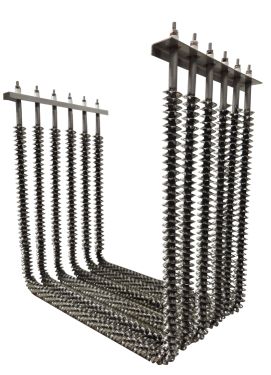
Backer Hotwatt air process heaters are high-performance electric heaters designed to deliver precise, controllable hot air and gas for a wide variety of industrial and commercial applications. Capable of providing air and gas temperatures up to 1000°F (540°C), these heaters offer infinite control by adjusting the voltage and air velocity, making them ideal for processes that demand both flexibility and accuracy.
These heaters are commonly used in applications such as baking, drying, laminating, metal working, packaging, plastic welding, preheating, sealing, soldering, shrink fitting, and synthetic fabric sewing. Their robust design accommodates multiple wattage circuits, allowing for quick heat-up, standby maintenance, and adaptation to varying thermal loads—all while maintaining tight wattage tolerances of +5%, -10% or better at the specified voltage.
Backer Hotwatt offers a range of air process heater types—including standard tee, maximum flow, pure flow (for clean air needs), and heavy-duty models—each engineered for specific flow rates, temperature ranges, and installation requirements. Custom options include various diameters, lengths, mounting fittings, and electrical connections to suit diverse operational needs.
Key Features:
• Delivers hot air/gas up to 1000°F (540°C)
• Infinite control by varying voltage and air velocity
• Multiple circuits available for flexible wattage and
quick heat-up
• Tight wattage tolerances (+5%, -10%)
• Wide range of diameters and mounting options
• Models for standard, high-flow, heavy-duty,
and clean-air applications
• Made in the USA
Typical Applications:
• Baking and drying processes
• Laminating and packaging
• Metal working and preheating
• Plastic welding and sealing
• Soldering and shrink fitting
• Synthetic fabric sewing
• Laboratories and clean air environments (Pure Flow models)
Feature/Option | Details/Choices |
| Max. Air/Gas Temperature | Up to 1000°F (540°C) |
Control | Infinite (via voltage & air velocity adjustment) |
Wattage Tolerance | +5%, -10% at specified voltage |
Heater Types | Standard Tee, Maximum Flow, Pure Flow, Heavy Duty |
Diameter Range | 3/8" to 1-1/4" (varies by model) |
Mounting Options | NPT threaded fittings, hose adapters, flanges, custom fittings |
Electrical Connections | Tubing “T” for leads, post terminals on larger diameters |
Construction Materials | Stainless steel, aluminum, copper tee, optional brass bushing |
Pressure Rating | Up to 100 psig (model dependent) |
Applications | Baking, drying, laminating, packaging, welding, preheating, etc. |
Special Models | Pure Flow (clean air), Heavy Duty (high temp/flow), Maximum Flow |
Backer Hotwatt air process heaters combine durability, versatility, and precise control, making them a trusted solution for demanding air and gas heating tasks across a broad range of industries.
Unit Heaters
Unit heaters are single-source, self-contained electric or gas-based heating devices designed to warm larger areas such as warehouses, garages, workshops, or commercial spaces with high ceilings or open layouts. Unlike duct heaters, which are integrated into a building’s ventilation system to heat circulating air, unit heaters feature a dedicated heating element paired with a built-in fan or blower that distributes heated air directly into the space.
Typical unit heater installations involve ceiling or wall mounting for optimal airflow and coverage. With their powerful output and focused design, unit heaters are especially efficient for spot heating and for spaces where central heating may be impractical or insufficient. Multiple units can be arranged to work in tandem, ensuring uniform comfort in large or high-loss environments. Unit heaters offer rapid heat delivery and are ideal for applications needing supplemental or primary heat in zones that are difficult to reach with conventional ducted systems.
By combining unit heaters for targeted comfort, and duct heaters within the air handling system, HVAC engineers and building managers can achieve tailored heating solutions that maximize energy efficiency, responsiveness, and user comfort across residential, industrial, and commercial spaces.
Backer Hotwatt offers a range of unit heaters engineered for powerful, reliable space heating in large environments such as warehouses, workshops, garages, and commercial spaces. These heaters are specifically designed for spot heating and efficient comfort delivery where centralized systems are not practical.
Key Features:
• Delivers hot air up to 1000°F (540°C) for rapid room heating
• Infinite or programmable heat control via thermostats, voltage, or air velocity adjustment
• Multiple circuits available—flexible wattage, quick heat-up, and standby modes for energy savings
• Tight wattage tolerances (+5%, -10%) ensure reliable performance at specified voltage
• Offered in models with various airflow rates and mounting styles—ceiling and wall, horizontal or vertical discharge
• Heater diameters range from 5/8″ to 1-1/4″, using robust stainless steel, aluminum, copper, or optional brass fittings
• Electrical connections include tubing “T” leads and post terminals for straightforward installation
• Suitable for multi-unit installations to achieve uniform comfort in large or high-ceiling areas; select models have corrosion-resistant finishes for challenging settings
• Made in the USA
Typical Applications:
• Space heating for warehouses, garages, workshops, commercial buildings
• Supplemental and primary heating in zones difficult to reach with central systems
• Rapid comfort delivery for spot heating in open layouts and areas with high ceilings
Backer Hotwatt Unit Heater Features & Options
Feature/Option | Details/Choices |
| Max. Air Temperature | Up to 1000°F (model and application dependent) |
Control | Built-in thermostat, programmable controls, multi-stage control |
Wattage Range | Multiple circuits from 5/8" diameter and up; quick heat-up; standby circuits |
Unit Types | Electric or gas; various airflow capacities; options for fan or blower |
Mounting Options | Ceiling or wall mount; horizontal or vertical air discharge |
Electrical Connections | Tubing “T” for leads, quick connect terminals, post terminals |
Construction Materials | Stainless steel, aluminum, powder coated steel, copper, brass bushings |
Coverage Area | Designed for large spaces, high ceilings, open layouts |
Pressure Rating | Atmospheric (not pressurized duct) |
Applications | Warehouses, garages, workshops, commercial spaces, targeted spot heating |
Special Models | High-output, multi-unit networked systems, corrosion-resistant finishes |
Circulation Heaters: Inline fluid/gas heating; even heating, integrated pumps, compact design
Circulation heaters combine a flanged heater with a pressure vessel and are used to heat liquids or gases as they flow through a closed-loop system. Integrated pumps circulate the medium past the heating elements for even temperature distribution, making them ideal for process heating, glycol loops, or industrial fluid management.
Backer Hotwatt cartridge heaters are precision-engineered electric heating elements designed to deliver localized, reliable heat in restricted or hard-to-reach areas. As the company’s most popular product, these heaters are widely used across industries—from plastics and packaging to medical devices, food processing, and industrial machinery—where close thermal control and efficient heat transfer are essential.
Available in a broad range of diameters (from 1/8” to 2-3/8” and metric sizes), lengths, wattages, voltages, and sheath materials, Backer Hotwatt micro-cartridge heaters can be tailored to meet the specific requirements of virtually any application. Both standard and high watt density (swaged) designs are offered, supporting work temperatures up to 1400°F (760°C) and enabling use in demanding environments and applications with high vibration or rapid cycling.
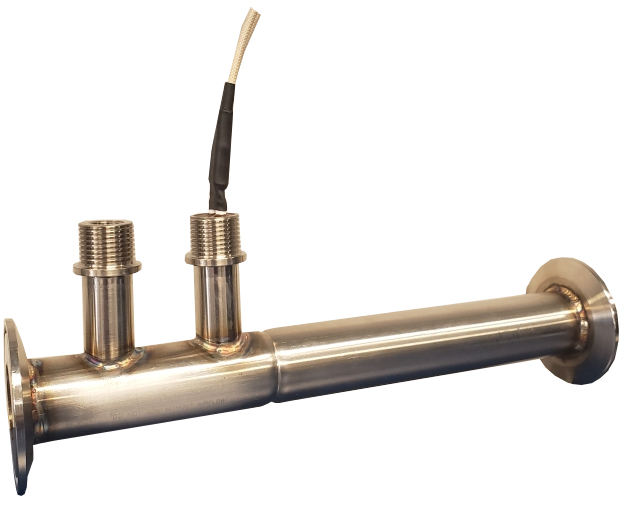
Key Features Include:
• Versatility:
Customizable in size, sheath, leads, terminals, wattage, and voltage for a wide variety
of applications.
• Precision Heating:
Provides localized, uniform heat for dies, platens, molds, and other processing equipment.
• High Performance:
Closely controlled work temperatures up to 1400°F (760°C); high watt density options for
fast response and high-temperature needs.
• Durability:
Swaged construction and robust materials (stainless steel, Incoloy, titanium) ensure long life, even
under tough conditions.
• Special Features:
Options for square/rectangular cross-sections, end seals, liquid-tight construction, and lead
protection for harsh environments.
• Certifications:
U.L. Recognized and C.S.A. Certified for safety and quality assurance.
Typical Applications:
• Plastic molding and packaging machinery
• Dies and platens
• Food processing equipment
• Medical devices
• Compressor crankcase heating
• Heat sealing, hot melt adhesive, glue pots, wax pots
• Labeling and photographic processing
• Industrial and scientific instrumentation
Backer Hotwatt Cartridge Heater Features & Options
Feature/Option | Details/Choices |
| Diameter Range | 1/8” to 2-3/8” (standard & metric sizes) |
Length Range | <1” to >4 feet |
Watt Density | Low, medium, and high (swaged) watt density |
Max. Temperature | Up to 1400°F (760°C) |
Sheath Materials | Stainless steel, Incoloy, titanium |
Lead & Terminal Options | Custom lead configurations, terminal protection, end seals |
Cross-Section Types | Round, square, rectangular, hexagon, triangular |
Mounting/Installation | Slide fit for optimal heat transfer; liquid-tight options available |
Certifications | U.L. Recognized (E56973), C.S.A. Certified (016386-0-000) |
Special Features | Custom wattage/voltage, split-sheath (SunRod), liquid-tight, lead protection |
Applications | Dies, platens, molds, food processing, medical, packaging, crankcase heating |
Strip Heaters:
Surface heating; uniform surface heating, easy installation
Backer Hotwatt strip and finned strip heaters are highly reliable, versatile electric heating elements designed to deliver clean, uniform heat in a wide range of industrial and commercial applications. Available in both mica-insulated and ceramic-insulated constructions, these heaters can achieve sheath temperatures up to 1200°F (649°C) and watt densities up to 40 watts per square inch, making them suitable for everything from process heating to air heating
and load banks.
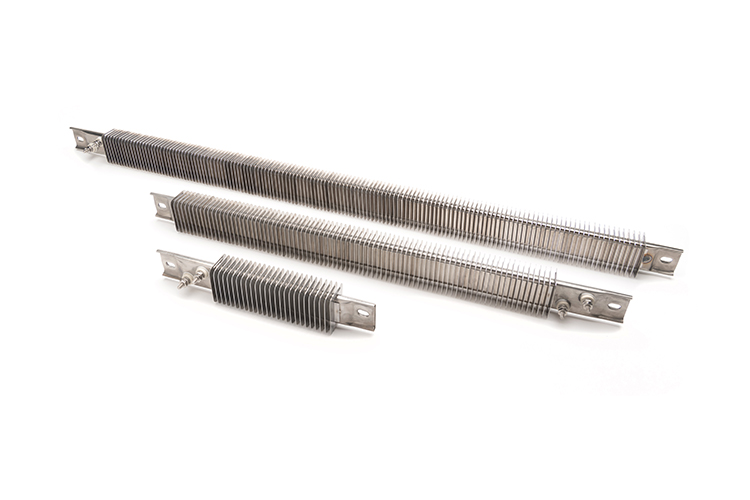
Key Features:
• Wide Application Range
Used for heating dies, molds, platens, cylinders, tanks, kettles, process machines, and
for air heating in ovens and load banks.
• Construction Options:
- Mica-insulated strip heaters:
Feature a rust-resistant steel sheath, mica insulation, and resistance ribbon wire for dependable performance and good dielectric strength.
- Ceramic-insulated strip heaters:
Built with a seamless stainless-steel sheath and ceramic supports, offering high dimensional stability and efficient heat transfer, particularly in milled slots.
- Finned strip heaters:
Incorporate aluminum or stainless-steel fins to maximize radiating surface, providing rapid heat transfer to air for ovens, ducts, and forced-air heating.
• Flexible Installation:
Can be used singly or in groups, and are best clamped securely to heated surfaces for maximum heat distribution and to prevent distortion.
• Customizable Terminations:
Multiple terminal and lead options (post terminals, high-temperature insulated leads, ring terminals, quick-connects) to suit diverse installation needs.
• Certifications:
U.L. Recognized (E56973) and C.S.A. Certified (016386-0-000) for safety and quality assurance.
• Made in the USA:
Manufactured to high standards for reliability and performance.
Typical Applications:
• Platen heating
• Dies and molds
• Plastic forming and sealing
• Tank and kettle heating
• Air ovens and load banks
• Cylinders and process machines
Backer Hotwatt Strip & Finned Strip Heater Features
Feature/Option | Details/Choices |
| Max. Sheath Temperature | Up to 1200°F (649°C) |
Max. Watt Density | Up to 40 W/in² |
Insulation Types | Mica (steel sheath), ceramic (stainless steel sheath) |
Finned Options | Aluminum (standard) or stainless-steel fins for enhanced air heating |
Mounting | Clamp-on for surface heating; slot-mountable for ceramic models |
Terminations | Post terminals, parallel/tandem/centered, high-temp leads, quick-connects |
Certifications | U.L. Recognized, C.S.A. Certified |
Mounting/Installation | Slide fit for optimal heat transfer; liquid-tight options available |
Certifications | U.L. Recognized (E56973), C.S.A. Certified (016386-0-000) |
Standard Voltages | 120V, 240V; other voltages available |
Custom Features | Special terminals, moisture-resistant leads, secondary insulation, blunt ends |
Applications | Dies, molds, platens, tanks, kettles, air ducts, ovens, load banks |
Backer Hotwatt strip and finned strip heaters combine robust construction, flexible installation, and a wide range of options, making them a trusted solution for precise and dependable heating in demanding industrial and commercial environments.
Tubular & Finned Tubular Heaters
Tubular Heaters:
Versatile direct heating; durable, flexible shapes, efficient
Backer Hotwatt tubular and finned tubular heaters are robust, versatile heating elements engineered for a wide variety of industrial and commercial applications. These heaters are designed to deliver efficient, reliable heat to surfaces, air, and fluids, making them a popular choice for OEMs and engineers in industries such as HVAC, as well as plastics, packaging, and process heating.
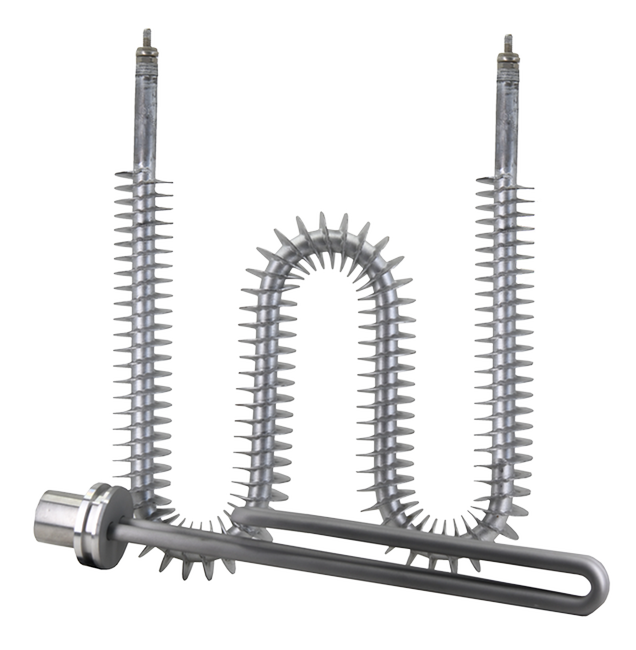
Key Features:
• Versatile Applications:
Used in cylinders, dies, drums, holding tanks, injection and blow molding machines,
plastic extruders, and many other heating processes.
• Rugged Construction:
Built to withstand shock, vibration, corrosion, and temperature extremes. The swaged construction compacts insulation and ensures rapid heat transfer while holding the heating coil in position for
custom forming.
• Material Options:
Available with sheaths in stainless steel, steel, copper, or Incoloy to match application needs
and resist corrosion or high temperatures.
• Finned Tubular Heaters:
Feature mechanically bonded, continuous fins (steel or stainless steel) to maximize
air heating efficiency and prevent vibration at high air velocities—ideal for air ducts, ovens, and forced-air
systems.
• Custom Formations:
Can be supplied straight or formed into a variety of shapes to fit specific installation
requirements. Minimum bend radii and custom sketches are supported for tailored solutions.
• Wide Range of Sizes and Ratings:
Standard diameters include .260”, .315”, .375”, .440”, and .475”, with
lengths up to 324” and wattages up to 18,885 W, depending on sheath material and application.
• Certifications:
U.L. and C-UL Recognized (No. E177353).
• Made in the USA:
Engineered and manufactured for long, trouble-free service.
Typical Applications:
• Surface heating (clamped to or inserted in dies, molds, platens)
• Air heating (ducts, ovens, load banks, forced-air systems)
• Fluid heating (immersion in tanks, process fluids)
• Industrial equipment (plastic processing, packaging, food processing)
Backer Hotwatt Tubular & Finned Tubular Heater Features
Feature/Option | Details/Choices |
| Applications | Cylinders, dies, drums, tanks, injection/blow molding, extruders, air ducts |
Sheath Materials | Stainless steel, steel, copper, Incoloy |
Max. Sheath Temperatures | Steel: 750°F; Copper: 350°F; Stainless Steel: 1200°F; Incoloy: 1600°F |
Standard Diameters | .260”, .315”, .375”, .440”, .475” |
Maximum Length | Up to 324” (material dependent) |
Wattage Range | Up to 18,885 W (material and diameter dependent) |
Finned Options | Steel or stainless-steel fins for enhanced air heating |
Custom Formations | Straight or formed to customer specifications; various mounting fittings |
Terminations | Post, lead wire, pin, tab, quick connect, hermetic seal |
Certifications | U.L. and C-UL Recognized (E177353) |
Special Features | Mechanically bonded fins, swaged construction, rapid heat transfer |
| Made in | USA |
Backer Hotwatt tubular and finned tubular heaters combine ruggedness, flexibility, and efficient performance, making them a trusted solution for demanding heating applications across a wide range of industries. We speak more about the benefits of tubular finned heaters in this blog.
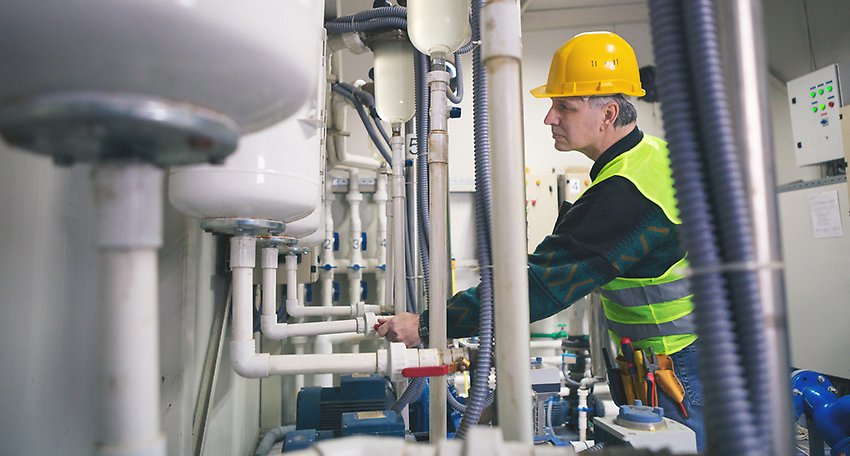
Real-World Example
In a commercial hydronic heating system, flanged immersion heaters are installed in the main water storage tank. As the system circulates water through the building, the heaters maintain the desired temperature with high precision, ensuring consistent comfort while minimizing energy use. The robust design and direct immersion method mean the system can operate reliably for years with minimal maintenance.
Flanged heaters are essential components in modern HVAC systems, offering efficient, reliable, and customizable heating for liquids, gases, and air. Their robust construction, precise control, and adaptability make them a cornerstone technology for OEMs and facility managers aiming for high performance and long-term operational success.
How Flanged Heaters Handle Different Types of Fluids in HVAC Systems
Flanged heaters are highly adaptable heating solutions in HVAC systems, capable of efficiently transferring heat to a wide variety of fluids, thanks to their direct immersion design and secure flange mounting. They are engineered with different sheath materials—such as stainless steel or copper for water, Incoloy, or titanium for corrosive fluids such as brine and deionized water, and Hastelloy or specialty coatings for chemical and caustic solutions—to ensure optimal compatibility and durability.
For oil heating, flanged heaters use lower watt density and specialized materials to prevent overheating and prolong heater life, while glycol-compatible options are widely used for freeze protection in hydronic loops. Integrated temperature controls, including thermocouples and high-limit sensors, provide real-time feedback and safety.
This versatility allows flanged heaters to be customized for applications ranging from hot water storage and freeze protection to preheating oils and maintaining chemical solutions, making them a reliable and efficient choice for both standard and specialized HVAC needs.
Customization and Integration: The OEM Perspective
One of the standout advantages of electric heaters—especially those from Backer Hotwatt—is their customizability. OEMs can specify:
• Materials:
From standard steel to high-grade Incoloy for corrosive environments.
• Power Ratings:
Tailored to the exact heating load.
• Control Features:
Integrated sensors, thermostats, and safety cutoffs.
• Form Factors:
Compact designs for tight spaces or large-scale units for central plants.
This flexibility enables OEMs to design HVAC systems that are efficient and reliable, while also tailored to the unique needs of each project.
Sustainability and Cost Savings
Electric heaters play a pivotal role in reducing the carbon footprint of HVAC systems. By operating on renewable electricity and delivering heat exactly where and when it’s needed, they help building-owners achieve sustainability goals while minimizing energy waste.
Long-Term Value
Durable construction and minimal maintenance requirements mean that electric heaters offer a lower total cost of ownership compared to many traditional systems. Their scalability also allows OEMs to future-proof their designs as building needs evolve.
Real-World Impact
• Data Centers:
Electric duct heaters paired with smart controls maintain precise humidity and temperature, protecting sensitive servers and reducing downtime.
• Pharmaceutical Manufacturing:
Flanged and immersion heaters ensure that process water is kept within strict temperature tolerances, supporting product quality and regulatory compliance.
• Green Buildings:
All-electric HVAC systems featuring Backer Hotwatt flanged heaters help commercial developers achieve LEED certification and meet local emissions targets.
How Does Watt Density Affect the Performance of Flanged Heaters in HVAC Systems?
Watt density—the amount of power (watts) applied per unit surface area of a heater element—is a critical factor influencing the performance, efficiency, and longevity of flanged heaters in HVAC systems.
There are four variables for operational consideration regarding watt density:
1. Heating Rate and Temperature Control
Higher watt density means more heat is generated per square inch of the element, resulting in faster heating and quicker temperature rise.
2. Efficiency and Uniformity
An appropriately matched watt density ensures efficient heat transfer and uniform temperature distribution.
3. Heater Longevity and Maintenance
Lower watt density generally results in lower surface temperatures on the heating element, which reduces thermal stress and the likelihood of scale buildup or element burnout.
4. Application Suitability
Selecting the correct watt density depends on the specific HVAC application and the properties of the medium being heated.
Effects of Watt Density on Flanged Heater Performance
Watt Density Level | Effects on Performance | Suitability |
Low | Gentle, uniform heating; longer | Sensitive fluids, continuous use |
Moderate | Balanced efficiency, uniformity, and lifespan | Most HVAC applications |
| High | Fast heating; risk of hot spots, overheating, | Rapid response, robust applications |
Choosing the optimal watt density for flanged heaters in HVAC systems is essential. Too high, and you risk overheating, inefficiency, and premature failure; too low, and heating may be insufficient or slow. Properly matched watt density ensures efficient, uniform heating, system reliability, and long service life.
What Should OEMs Consider Next?
As you design your next HVAC solution, consider:
• Integration with Controls:
Modern electric heaters can be seamlessly integrated with building automation and
IoT platforms for real-time monitoring and optimization.
• Safety and Compliance:
Look for heaters with UL, CSA, or other relevant certifications, and ensure they
include necessary safety features.
• Maintenance Planning:
While electric heaters are low-maintenance, periodic inspection and cleaning can
further extend their life.

Precise, Efficient HVAC Heaters for Controlled Environments
Backer Hotwatt’s engineering team is here to help you design the optimal electric heating solution—whether you need a custom flanged heater for a new hydronic system, or a robust duct heater for a retrofit.
When it comes to controlling the environment of your application, heat and temperature are crucial to consider. Selecting the right heating element helps ensure the level of efficiency, allows you to attain optimal performance, and improves the overall lifespan of the heater’s end use. We’re committed to supporting OEMs as the HVAC industry transitions to a cleaner, smarter future.
Whatever your design or engineering challenge is, Backer Hotwatt has the expertise and broad technology base to develop a customized and dependable product for your unique needs. Whether you are heating air, fluids, gases, or other surfaces, our engineers can develop a solution that helps your application function most efficiently.
Established in 1952, Backer Hotwatt, Inc. has been a trusted source of superior quality heating elements for OEMs in the HVAC/refrigeration, medical, industrial, semiconductor, commercial, packaging, instrumentation, aviation, transportation, and military fields for over 70 years. We’re here to help you design and manufacture the best heater for your demanding and precise needs.
How can we help you with your next heating project? Contact us today to set up a consultation and see how our electric heaters can power your next generation of efficient, sustainable HVAC systems.
Explore Our Products: Backer Hotwatt Product Catalog
